30 ways cats are not that different from dogs
Pets

Audio By Carbonatix
By Keri Wiginton, Stacker
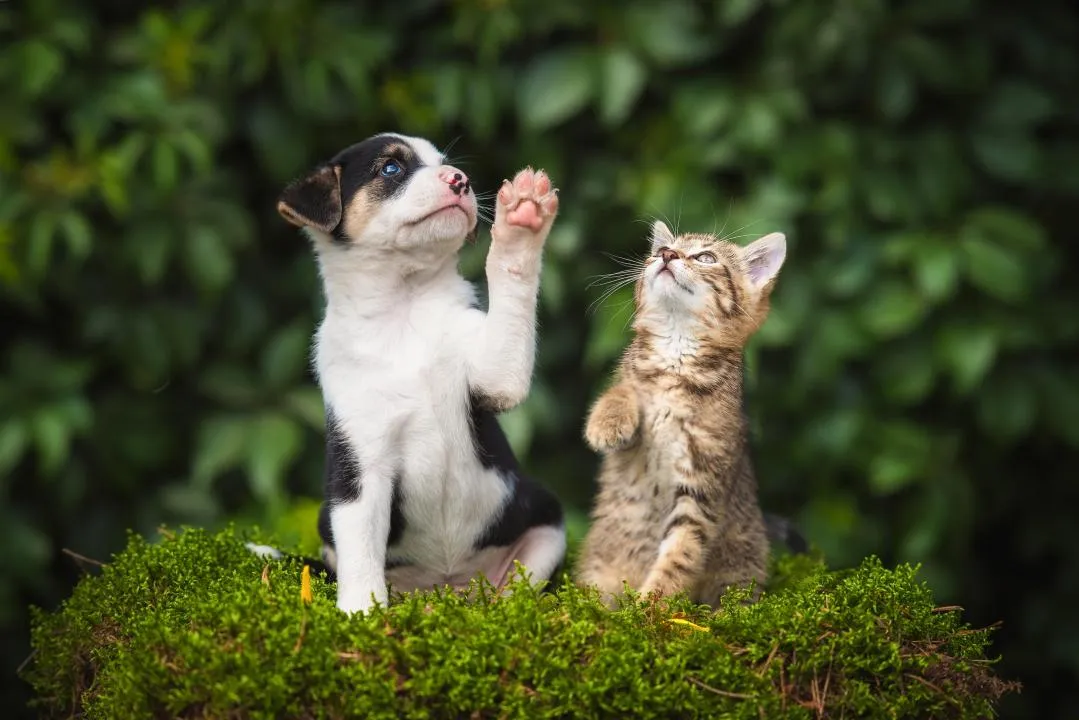
30 ways cats are not that different from dogs
Almost 70% of the population has a pet, which isn't surprising considering research suggests they can actually make people happier. Slightly more households have dogs, but cats come in a close second. Most people know if they are a cat or dog person, but there are some quizzes to help those who are on the fence. The pet that people tend to choose may even reveal a little about their personality.
While people may swear the differences in cats and dogs put either in the best pet category, there are many similarities between these animal companions. Recent studies show that dogs may be more intelligent than cats, but both animals can bond with and show affection to humans, are territorial, and could survive on their own if necessary.
To help bridge the divide between cat and dog people, Stacker gathered data from the Humane Society, the American Society for the Prevention of Cruelty to Animals, and other websites to compile a list of 30 ways these animal companions don't differ much from each other. Click through to see similarities between the two.
RELATED: Heartwarming stories about dogs saving humans' lives
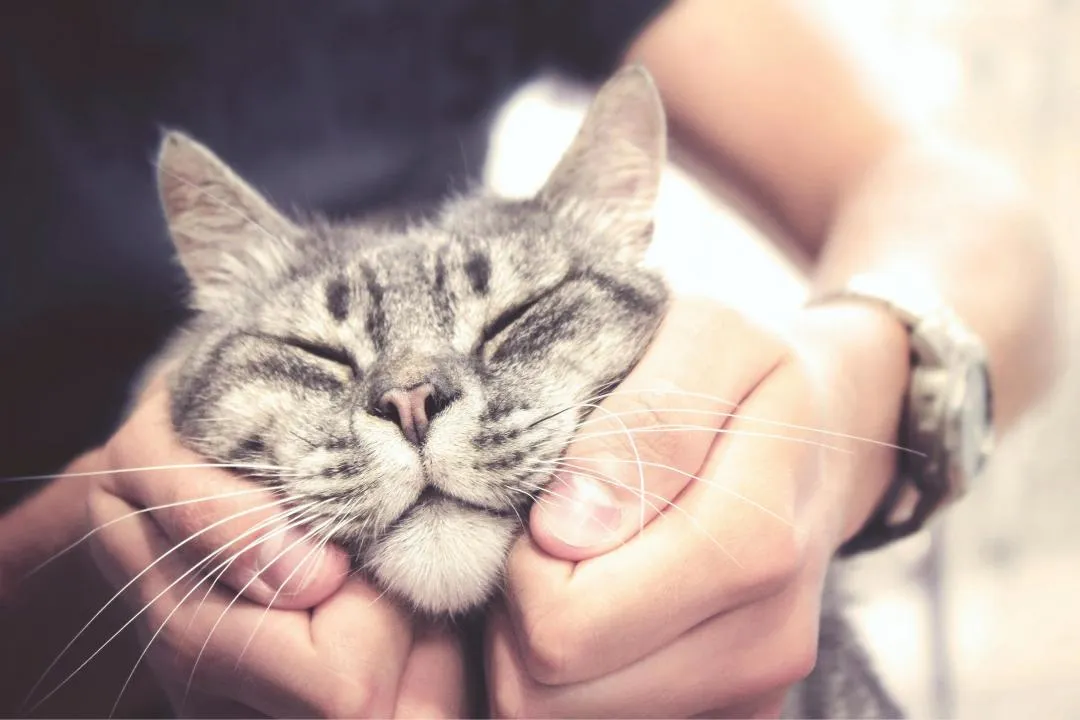
They show affection
Cats may have a reputation for being aloof, but they’re just more subtle about showing their love. They don’t cover their owner’s face in licks like dogs. Instead, they tend to show their affection to humans by sitting beside them, grooming them, and sending snuggle signals with their tails, which is what they do to each other.

They communicate
Both cats and dogs communicate, they just do it in different ways. Cats talk to their humans through meows, something they don’t do with other cats. Sometimes they’re saying hello or asking for food, other times they’re signaling that something is wrong.
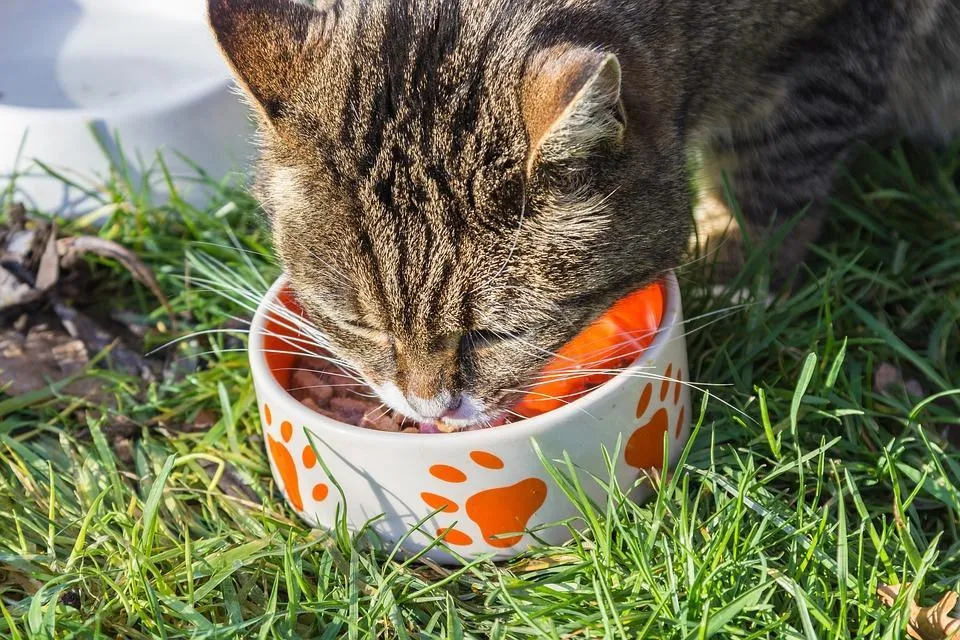
They eat meat
Both animals are meat-eating carnivores. The difference is that cats are considered obligate carnivores, which means they need animal protein to survive, though some vegetarian pet food companies debate this fact. Dogs are scavenging carnivores, so they could be vegetarian if they had to.
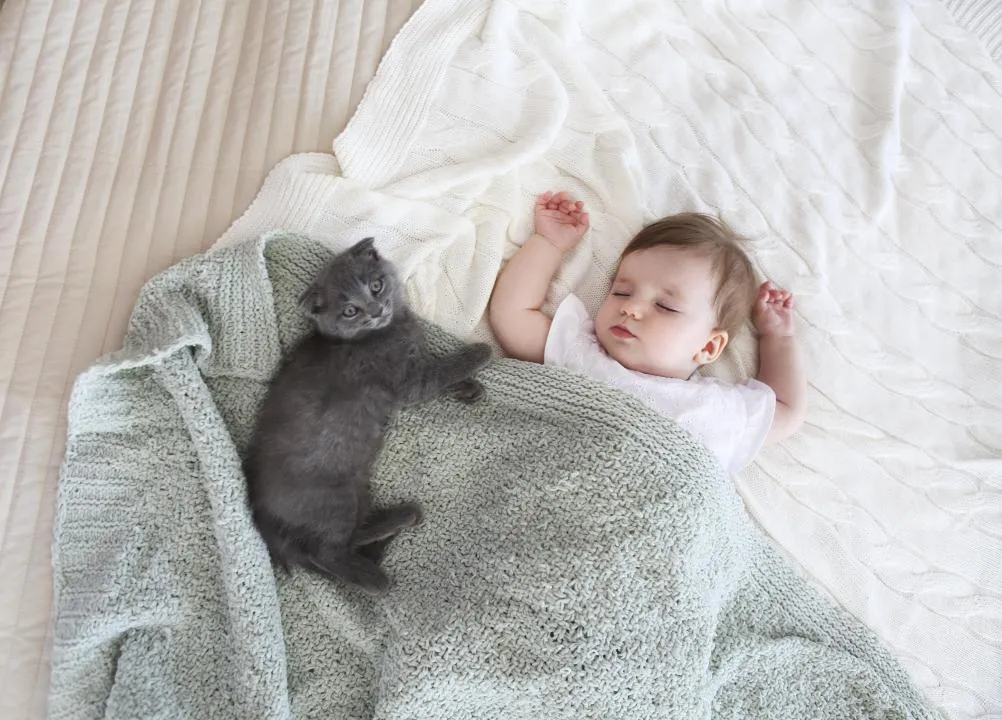
They can bond with babies
Though it can take some work to get cats and dogs used to tiny humans, one quick YouTube search will show plenty of examples of cats and dogs playing, grooming, and cuddling with babies. To be safe, prepare a feline for an infant’s arrival by setting up the nursery early and playing baby noises around the house during pregnancy.

They have similar gestation periods
Cats and dogs are pregnant for about the same length of time. Both have gestational periods of about 63 days.
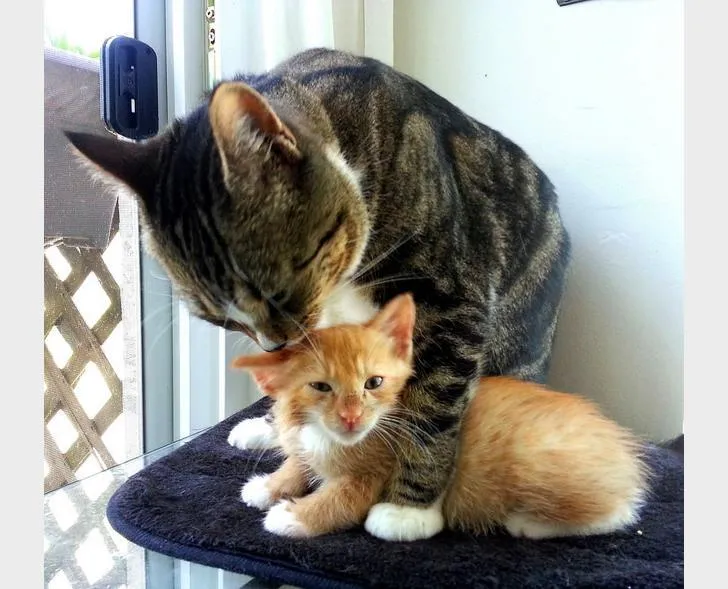
They need time with their mom
Kittens and puppies receive nourishment from their mothers’ milk for about four weeks. Dogs can be weaned around seven or eight weeks after birth, while kittens may need a little more time. If not weaned properly, both animals can suffer emotionally and physically.

They have a strong sense of smell
Cats and dogs both have much stronger senses of smell than their human companions. While dogs may have more sniffing receptors than cats, studies show cats may have a more discriminatory sense of smell.
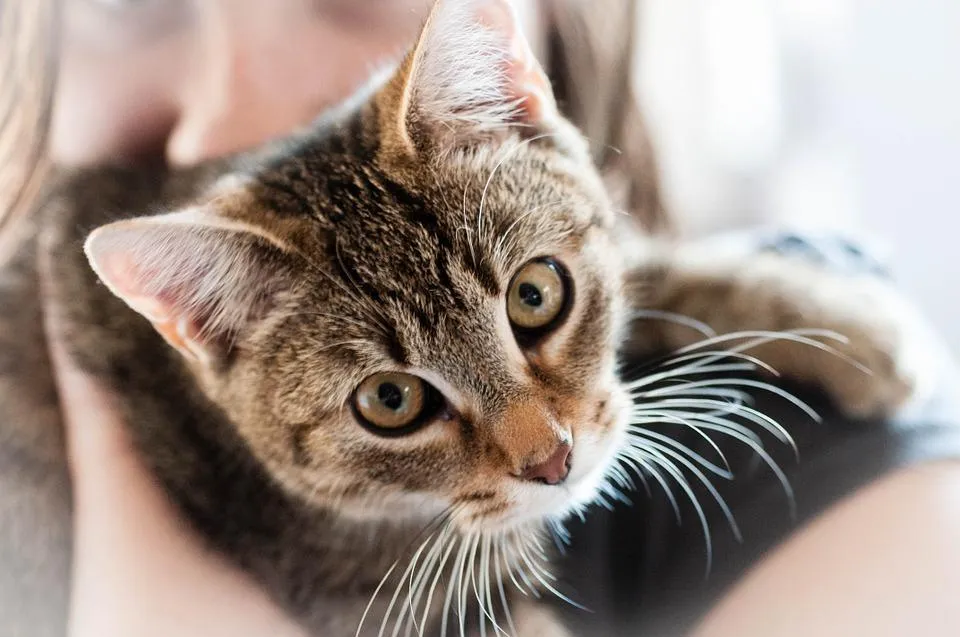
Intestinal parasites can be harmful
The same intestinal parasites can make both dogs and cats sick. Common ones to look out for are hookworm, tapeworm, roundworm, and whipworm. Head to the veterinarian if either type of pet displays quick and unexplained weight loss, vomiting, diarrhea, coughing, or scooting behavior.

Heartworms are a concern
Both pets are susceptible to heartworms, foot-long worms spread by mosquitoes that can live in the animal’s heart, lungs, and nearby blood vessels. Preventive medication is the best method for protecting both animals from the parasite and is the only method for helping cats. While the worms rarely make it to adulthood in cats, the immature worms can still cause long-term damage and cannot be treated with the same medicine as dogs.

Humans can get allergies from both
Much to the chagrin of many animal lovers, both cats and dogs cause allergies in humans. People are allergic to cats at about twice the rate of dogs, and can be sensitive to the proteins in their pet's urine, saliva, or dander (dead skin cells).
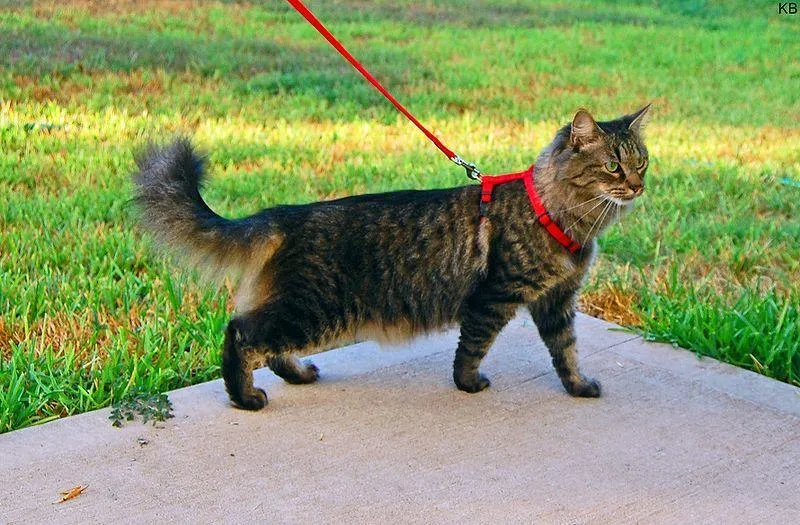
Both can be trained
While it’s easier to get dogs to do what you want them to, it’s possible to also train cats. They can learn to come on command, shake, and even use the toilet—though this might not be a great idea.
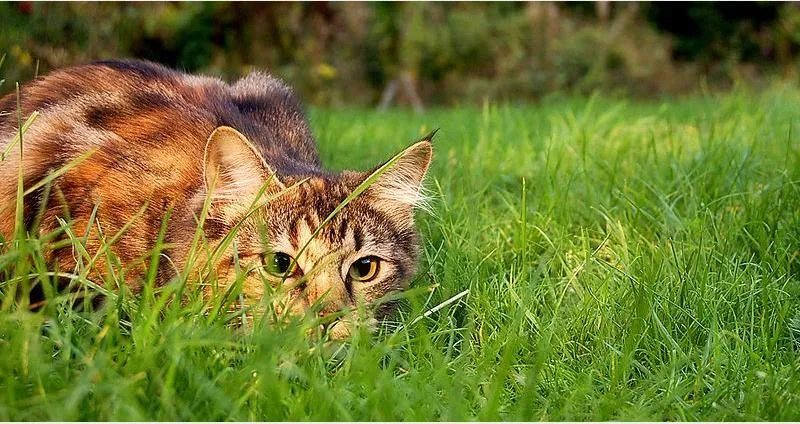
They have hunting instincts
Though domestic animals rarely, if ever, have a reason to kill their own food, both cats and dogs still have hunting instincts. Though humans like it when cats kill pests like rodents, these outdoor felines can have an adverse impact on birds and reptiles.

They are territorial
Both animals will claim their space. If a cat or dog has ever peed on something—whether it’s a fire hydrant or a new pair of shoes—they’re marking their territory. Usually, though, they stick to barking (dogs) or rubbing their faces on things (cats).

They send signals with their ears
Though they do it in different ways, both cats and dogs send signals with their ears. A confident cat will hold their ears up when greeting someone. If the ears move back, or twitch, something is amiss. A dog with upright ears is letting others know they are willing to stand their ground. They will move their ears back when showing submission or friendliness.

Their behavior can reveal an illness
When a cat or dog gets sick, they will probably change their behavior. Cat owners need to be particularly observant of any changes in their feline friends, because cats tend to keep to themselves more than dogs.
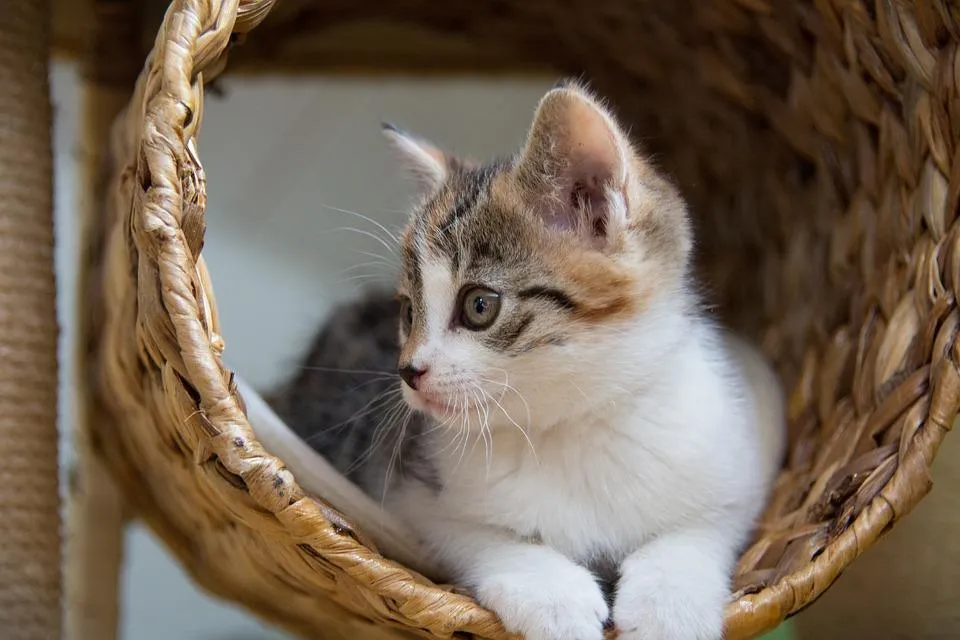
Their ears increase hearing accuracy
Cats can hear at a higher frequency than dogs, and both have more accurate hearing than humans. They have muscles that allow for independent control of their ears, which helps them catch more sound.

They can be cozy sleeping partners
More than 60% of small dogs and cats sleep with their humans. While it’s fine for healthy people to sleep alongside a pet, those with allergies should avoid it.
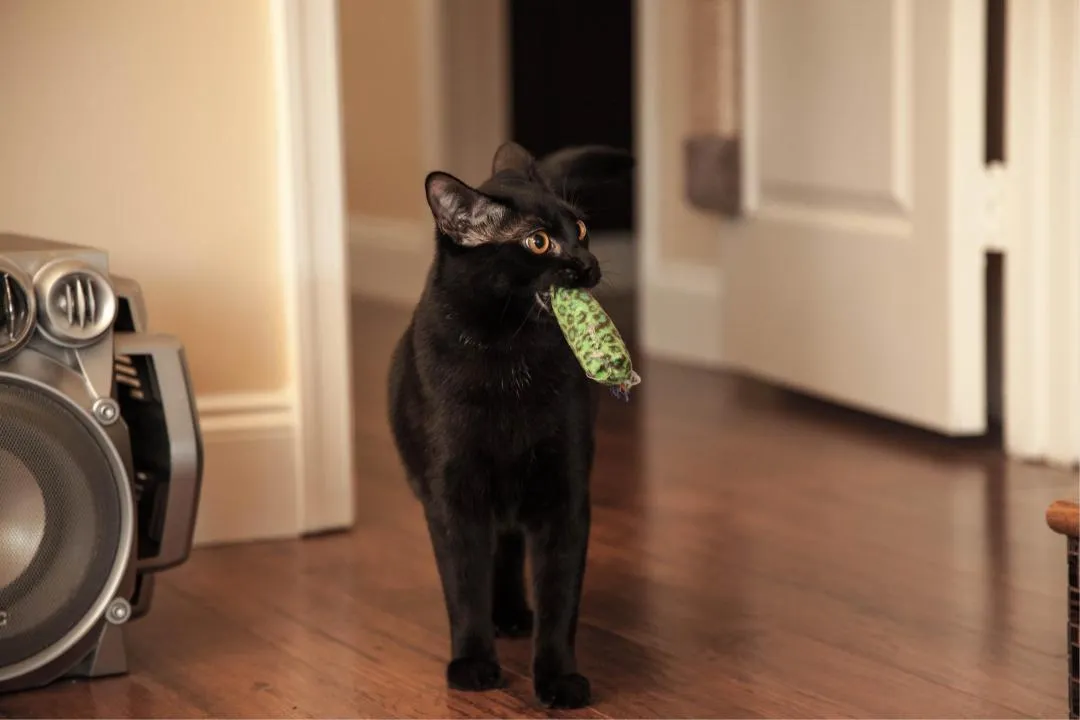
Both can fetch
Playing fetch usually conjures up an image of dogs and owners playing in the park. However, cats can learn to fetch. Some breeds are more fond of the game than others.
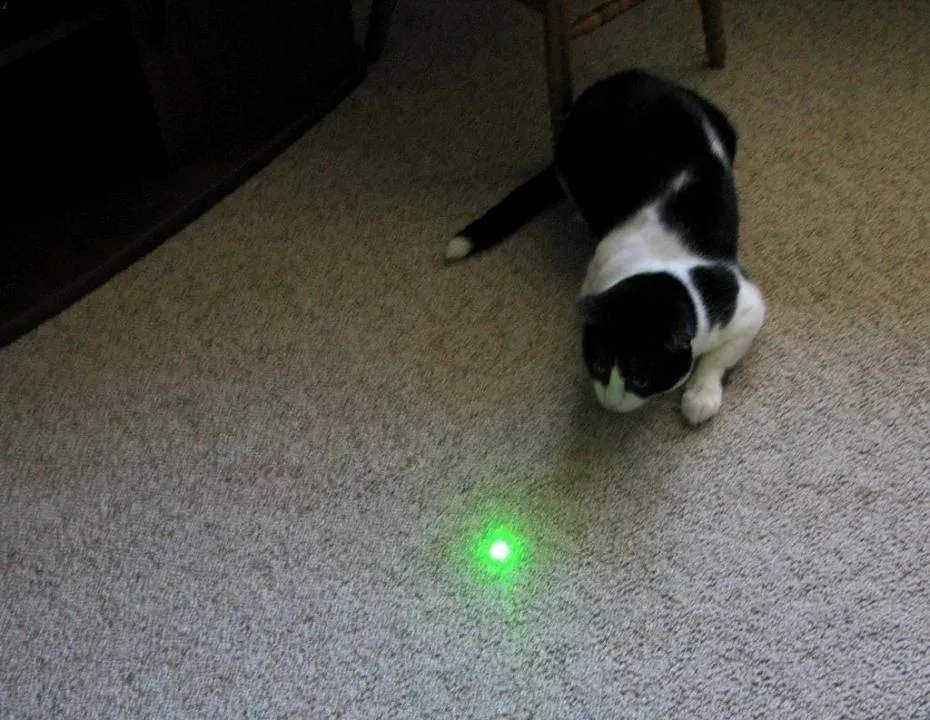
They chase lasers
Anyone who has broken out a laser pointer to play with their dog or cat knows they love chasing those moveable beams. They are both attracted to the movement of the red dot in particular, which activates their predatory system. However, since neither animal will ever catch this invisible prey, it might be upsetting to play this game too often.
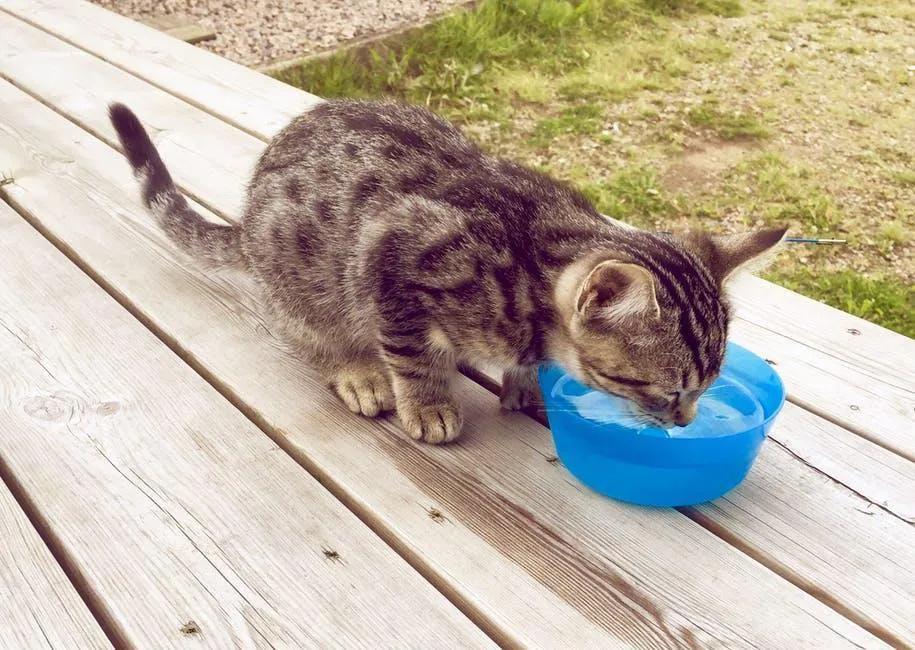
They use their tongue to drink
Both cats and dogs use their tongues to lap up water. Cats employ a more elaborate system, using their tongues to flick water up that they then catch in their mouth. Dogs just scoop the water in with their tongue.

Fleas and ticks are a problem
Fleas, the most common external parasite, attach themselves to cats and dogs. Both companion animals also get ticks—arachnids that feed on the blood of their hosts.

Both need vaccines
Cats and dogs need slightly different treatments, but both should receive vaccines when they are two months old. Getting a rabies shot is essential for both.
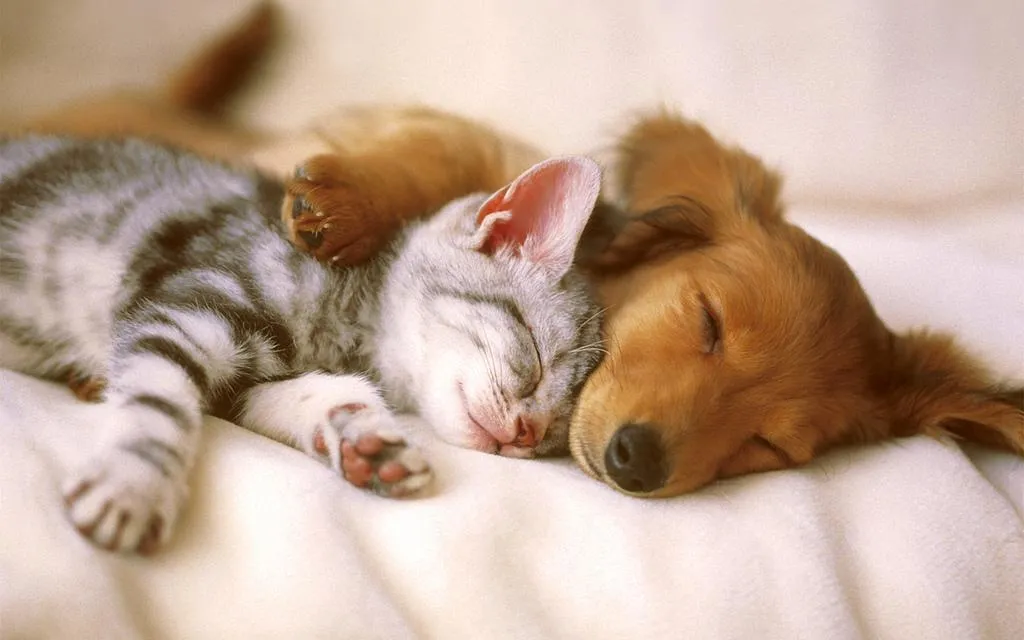
They have common ancestry
Both animals belong in the order Carnivora, along with bears, hyenas, and walruses. The most common similarity is in the teeth, which are blade-like and allow the animals to tear through food.
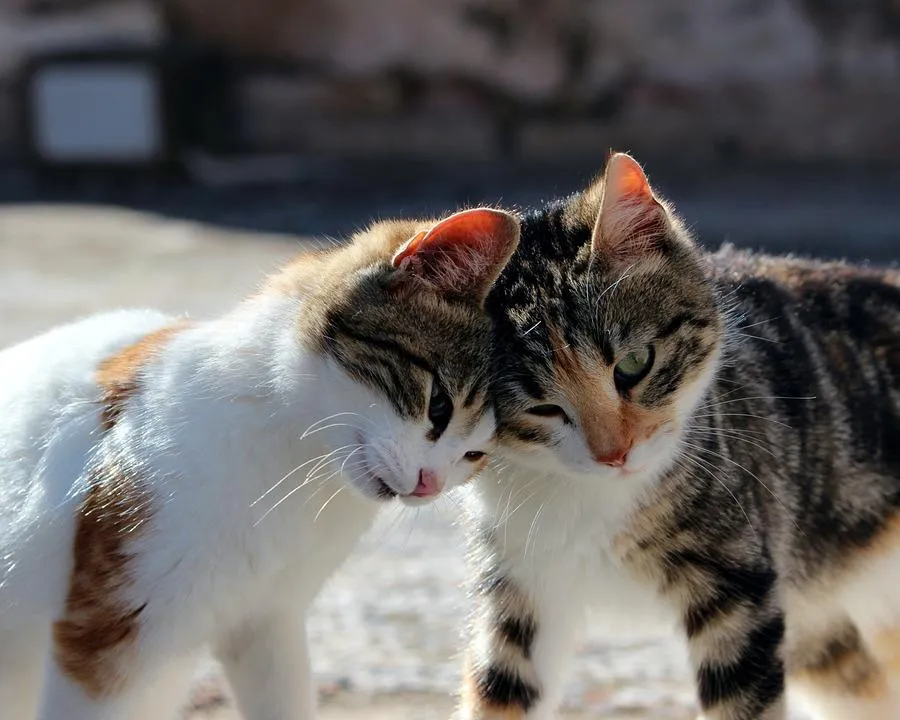
They age quicker than humans
While indoor cats usually live longer than dogs, they both age much faster than humans. How long a companion animal lives depends on a variety factors, including their size, breed, genetics, and whether they live inside or outdoors.

They can use animal navigation
Like in this film "Milo & Otis," cats and dogs can often find their own way home. In 2013, one lost cat traveled 200 miles to return to its hometown. Scientists think dogs rely on their scent, while cats use the Earth's magnetism to navigate the way.
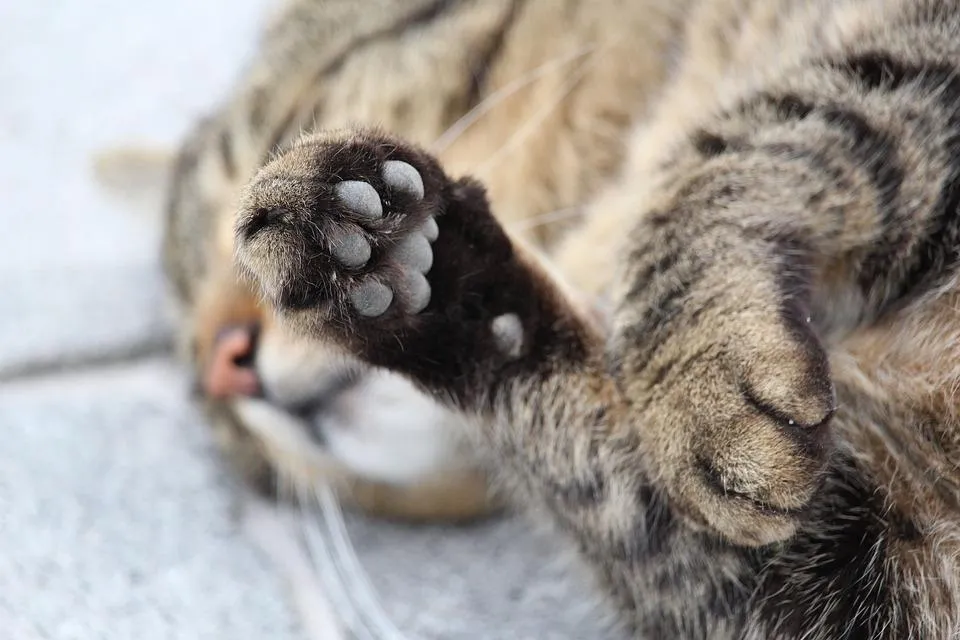
They have paw pads
Dogs and cats can’t pop on a pair of cozy slippers. Instead, their paw pads help cushion their feet. These thick sections of hairless skin are made up of fat and tissue that help with stability and balance. Since dogs are often outside more than cats, the skin on their pads is usually thicker and rougher.

Human food can be toxic
Chocolate is a common food that cat and dog owners are told to keep away from their pets. However, a variety of other human foods, including grapes, raisins, onions, garlic, and anything with caffeine, can also be toxic.
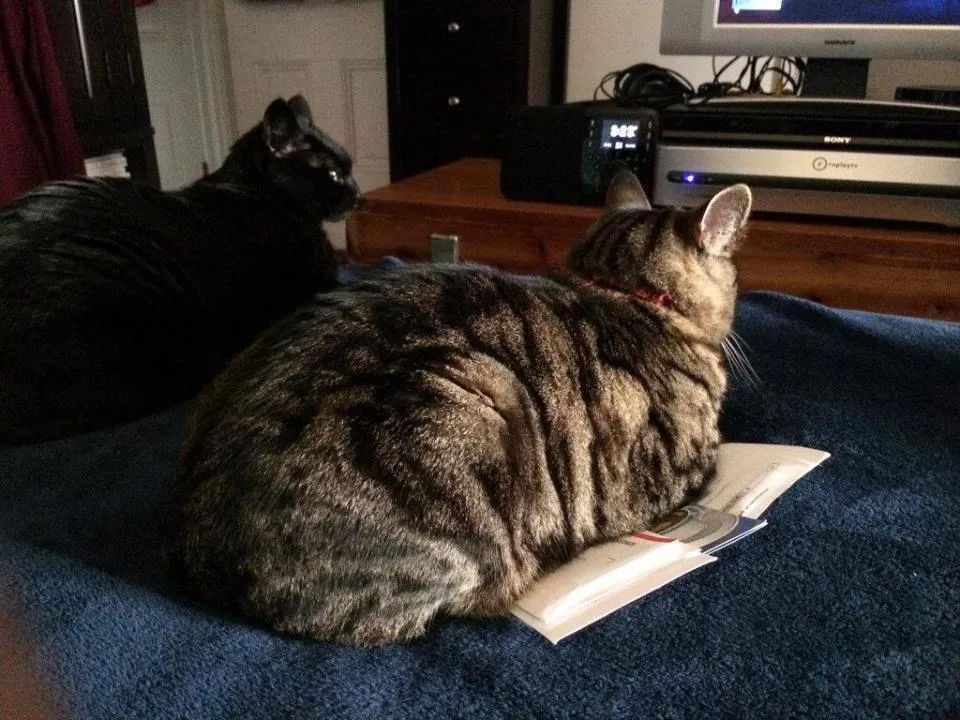
They like to watch T.V.
Cats and dogs seem to respond to images on television, especially if another animal is involved. Dogs can perceive an on-screen animal the same way humans can, so they may think an imaginary dog is real. Cats can also entertain themselves while watching moving objects on television.

They like music
Research shows playing classical music might lessen stress in dogs kept in kennels. While cats don’t particularly seem fond of human music, researchers were able to create sounds they did find appealing.
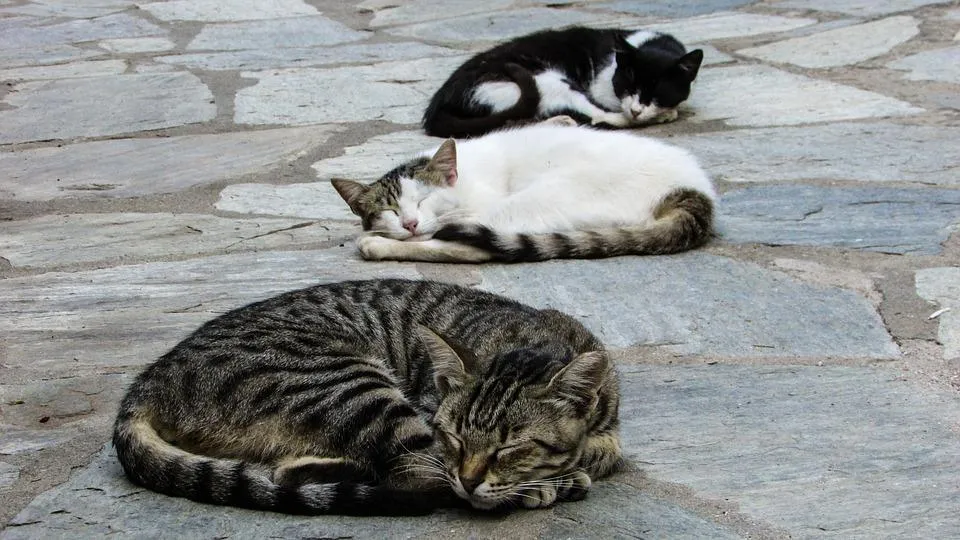
They sleep a lot
Both cats and dogs spend at least half of their day snoozing. An adult dog sleeps around 50% of their day, while cats doze on and off for an average of 15 hours a day. Some cats can even sleep up to 20 hours.

























